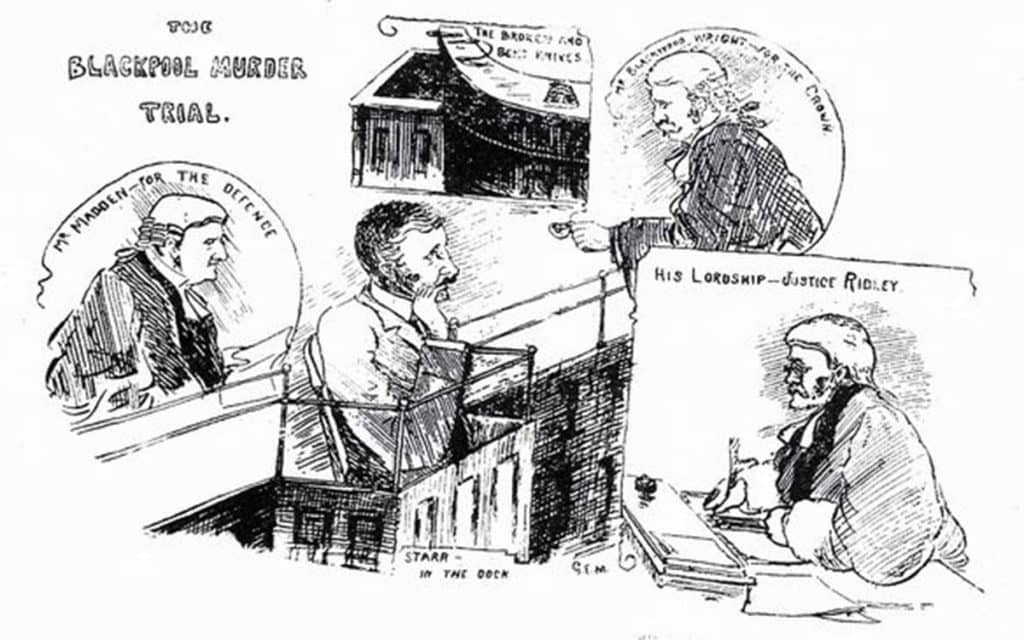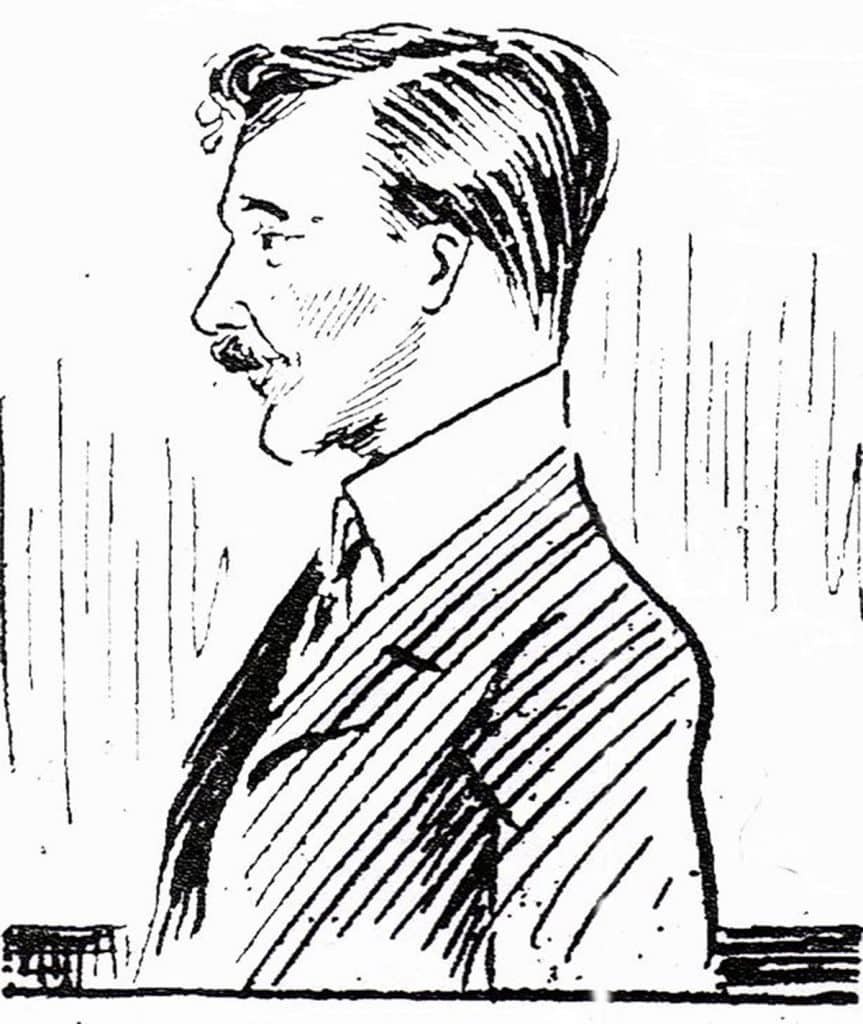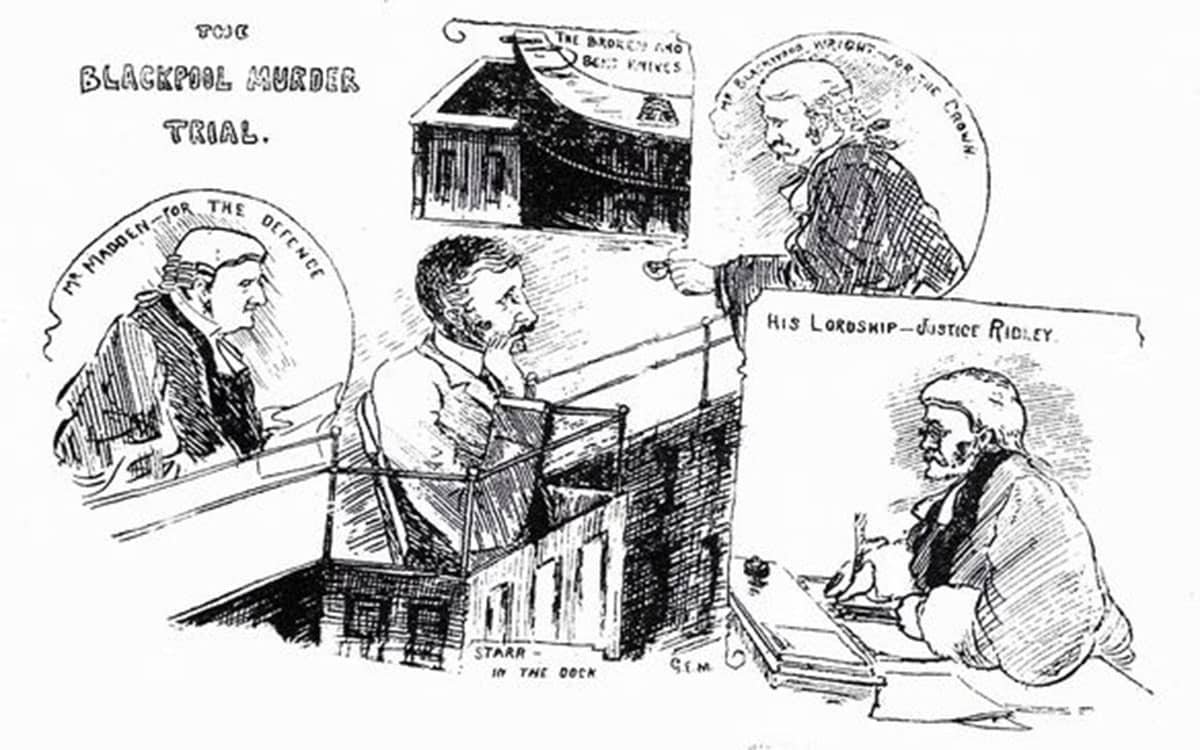Henry Bertram Starr became known as the Blackpool Ripper following the vicious 1903 killing of his wife, ZOWIE SWAN writes

On November 24 1903, the citizens of Blackpool were left horrified by a gruesome and savage murder. The victim was Mary Hannah Starr, long suffering and recently estranged wife of Henry Bertram Starr.
Only the day before her death, after years of abuse, violence and adultery, Mary had successfully secured a separation order against her husband in order to give herself and her young child a better life. She left Henry, moved in with her mother and drew a line under what had been an absolutely terrible marriage.
But Henry had other ideas. He stalked her mother’s house the following day, before slipping in the back door and attacking his wife mercilessly.
Doctor ‘aghast at severity of attack’ of Blackpool Ripper
Dr Johnson, who examined poor Mary’s body was aghast at the severity of the attack. Henry Starr had ripped great holes in his wife, tearing her open, creating wounds so big the doctor could fit his whole fist inside. He left her with twenty gaping lacerations of the most brutal kind.
The stabbing had been so frenzied that the bread knife Henry had been using penetrated Mary’s bones and its blade snapped off inside her. When this had happened Henry merely grabbed another knife from the kitchen side and carried on.
She was found by her mother Mrs Blagg, in their kitchen at 76 Lord Street, which runs perpendicularly to Dickson Road, connecting Pleasant Street and Queens Street. Mrs Blagg heard her daughters cries and ran to her aid, when she entered the kitchen Henry was still there, slicing his wife to ribbons as his mother-in-law stood in horror. He even attacked Mrs Blagg when she threw herself over her daughter to try and save her. Luckily, she fought him off and chased him down the road as he fled drenched in blood, screaming “He’s murdered my wench!”
Henry scarpered off into town and was found only an hour later hiding in the underground public toilets in Talbot Square, thoroughly soused and soaked in Mary’s blood. When the police collared him he had the audacity to ask “Is my wife dead?”
However, poor Mary could have been spared this sad fate had Henry been held accountable for the murder of his previous partner, 16 year old Eleanor Coulthard eight years previously.
Whilst staying in Clitheroe as a travelling salesman in 1896, Henry Starr met young Eleanor, herself a domestic servant in the nearby village of Chatburn. Despite his obvious boozing, lasciviousness and cruelty, the young girl became infatuated with the 24-year-old Henry. She wrote him multiple letters declaring her love and it was clear to all he was ‘stepping out’ with her.

When Eleanor’s body was found drowned in the river Ribble near the Brangerley Bridge, all eyes fell on her abusive, drunken beau Henry.
On the day that Eleanor was killed, Henry was seen twice by the same policeman. Sergeant Holmes saw Henry just before 5am on Monday morning in Salford. He told the officer that he was on his way to pawn his coat because he had no money. He said he’d seen a young lass in Chatburn and he would be seeing her that night too.
In a bizarre coincidence, Sergeant Holmes saw Henry at midnight fleeing away from the River Ribble, his clothes sopping wet and clearly drunk. As audacious as ever, he told the policeman that he had fallen in the river after drinking away all the money he had made on his pawned coat. When the officer asked if he had seen his young lady he said he had decided to drink the day away instead.
When Eleanor’s body was found it seemed like an open and shut case and Henry was arrested for her ‘wilful murder’.
However, all evidence was circumstantial, they could not prove that Henry had pushed or drowned Eleanor in the Ribble. Frustratingly, he was acquitted and walked away a free man.
But he had been caught red handed after killing Mary and didn’t even attempt to deny it this time.
Thousands attend victim’s funeral
The press went to town on the case, making the links between the death of Eleanor and the avoidable demise of Mary. Mary was buried in Blackpool on 29th November, thousands of people attended the ceremony, flooding the streets to pay their respects.
Henry’s only defence was that he was drunk. This time it didn’t wash. Henry was found guilty and was hanged by the neck until dead on 28th December 1903. He never admitted to killing Eleanor and took the truth of that night to his grave. However, before he was executed, Henry wrote a remarkable open letter for ‘the benefit of young men’ warning about the dangers of following the path to ‘hades’.
He sent this letter to a Blackpool Methodist preacher called Mr Ridgway and excerpts from this bizarre essay were published posthumously in The Burnley Express on Saturday 2 January 1904. In this letter Henry outlines his ‘slight homicidal tendencies’ and his downward spiral into drink, delirium, madness and murder’.
Today, 76 Lord Street is now home to the Ash Lea Hotel, a seemingly innocuous seaside Bed and Breakfast.
ZOWIE SWAN writes novels, short fiction and esoteric articles. For fiction she takes inspiration from Terry Pratchett, Neil Gaiman and Angela Carter. For journalism she is inspired by local Lancashire history and by the works of Charles Fort. In her spare time she plays bass guitar in Blackpool punk band Dischord. She likes tea leaves and cats, but she assures us she is definitely not a witch. Zowie is the co-author of Convent Crescent (written with Chris Newton), available on Amazon, Bandcamp or in person at any loud and sweaty Dischord gig. Her short fiction Maleficium can be found in the Spooky Isles anthology inspired by the Pendle Witches ‘Shadow of Pendle‘. Zowie is also the writer of ‘This Black Pool: A Miscellany of Oddities from the Fylde Coast’ column appearing in select issues of Eighth Day Magazine. For more information, visit her website www.zowieswan.com



